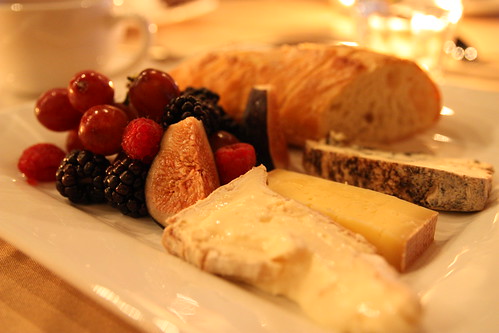A Year of Intermittent Fasting: ADF, Condensed Eating Window, Weight Loss, And More
I can't believe it's been a year since I started my intermittent fasting experiment. By now, I've gotten so used to it that most of the time it doesn't even feel like an experiment anymore. It's become more like an integral part of my diet.
Which is a good reason to spice things up a little. As I wrote two months ago, I made a temporary change to the experiment and switched from my usual 24-hour cycle of fasting and feeding to a condensed eating window of 6-8 hours just to see what happens.
I found the smaller eating window even easier than alternate-day fasting (ADF). In practice it meant that I skipped breakfast and lunch, and then had a big meal and some snacks when I got home. While at work, I only drank water, coffee and tea. During a 24-hour fast I usually get very hungry and slightly dizzy at one point close to the end of the fast, but skipping breakfast and lunch did not result in a similar feeling of hunger. Sure, I ate with good appetite once I got home, but my energy levels did not drop at all during the day.
I didn't measure my calorie intake, but based on the fact that I gained a kilo during this period, I assume I ate as least as much as I did before. So personally, cramming all of the daily calories into a window of 6 to 8 hours was not a problem. I was already used to eating huge meals, and the eating window was big enough to include lots of snacks or even another meal.
For someone considering intermittent fasting for weight loss, I would recommend either 24-hour fasts or using a shorter eating window than I did. A daily 20-hour fast with a 4-hour eating period improves insulin sensitivity and levels of circulating adiponectin, which are key factors in regulating fat storage and thus weight gain. Further, most of the studies showing benefits from intermittent fasting used an alternate-day feeding schedule.
The implication is that while an eating period of 6-8 hours is probably superior to the usual combination of breakfast, lunch, dinner, and snacks (which keeps your blood sugar constantly high), fasting between 20 to 24 is the choice with more positive studies behind it. This leads me to believe that the most important thing is not how small the eating window is, but rather how long the fasting period is. That is, while eating for 1 hour every 12 hours would technically constitute as a daily eating window of 2 hours, I suspect eating for 2 hours and fasting for 22 yields better results. Whether a 2-hour feeding window and a 22-hour fast is slightly better or worse than eating and fasting for 24 hours is unclear, but what is clear is that both work and that the latter is much easier in practice.
That said, I've been able to both lose and gain weight during my intermittent fasting experiment, depending on what and how much I eat. Anyone who claims that IF allows you to gorge on junk food while losing weight is plain wrong. Combining intermittent fasting with a low-carb diet is, in my opinion, the way to go if quick weight loss is your goal. This way you're getting the insulin benefits from fasting and the lowered insulin response from consuming few carbohydrates.
Another crucial factor would be total energy intake during the eating periods. Based on personal experience and what I've read from other people, there's a tendency to "load up" on calories just before the fast begins, whether you're hungry or not. This makes the fast much easier, because you'll be digesting the food for longer and the hunger won't begin until late the next day. For anyone who wants to get the health benefits of IF (such as reduced mitochondrial free radicals, one of the seven types of aging damage) but maintain their weight, this is probably a good idea, but for anyone else, it can easily render attempts at weight loss useless.
To counter this, my suggestion is to follow the intermittent fasting routine but to eat only when you feel hungry. If the fast is about to begin and you still feel bloated from your previous meal four hours ago, so be it. Don't try to stuff yourself with food as a pre-emptive strike if you don't feel like it. You'll probably feel the hunger pangs earlier the next day, but it'll pass after a few hours, and you'll feel more energetic afterwards.
The take-home message of the above is that despite what you may have heard, intermittent fasting by itself is no guarantee you'll lose weight. It can be used for weight loss, weight maintenance or even weight gain, depending on the implementation: the length of the fasts, the composition of the diet, and total energy intake. By optimizing those three factors, you can shift your weight into any direction you want. By disregarding them, it becomes a genetic gamble.
IF improves insulin sensitivity, which is a good thing, but the relationship between higher insulin sensitivity and weight is not as straightforward as it might seem (more on that later). The easiest way to lose weight for most people is still avoiding a high insulin response in the first place. Reading other people's experiences with intermittent fasting, it seems that most of them have the best results when they combine IF with diets that don't contain refined carbohydrates (including whole grain products), such as Atkins or paleolithic nutrition. When unrefined carbs are brought to the table, the disagremeent over the superior diet begins.
I'm now switching back to my old way of eating and fasting for 24 hours. Further evidence may prove me wrong, but at the moment, I feel that it's more beneficial for overall health than a condensed eating window of more than 4 hours. Squeezing the eating window just seems like too much of a hassle for me, though some people on IF manage to do just that.
I've also done a small experiment with dry fasting (meaning no food or water) and ketosis in my search for the optimal form of fasting, but I'll save that for another post. Meanwhile, I warmly welcome you to post your own experiences with intermittent fasting.
For more information on insulin, fasting and weight loss, see these posts:
Green Tea, Black Tea & Oolong Tea Increase Insulin Activity by More than 1500%
A High-Protein Diet Is Better than a High-Carbohydrate Diet for Weight Loss
Green Tea Extract Enhances Abdominal Fat Loss from Exercise
Slowing Down Aging with Intermittent Protein Restriction
Read More......















